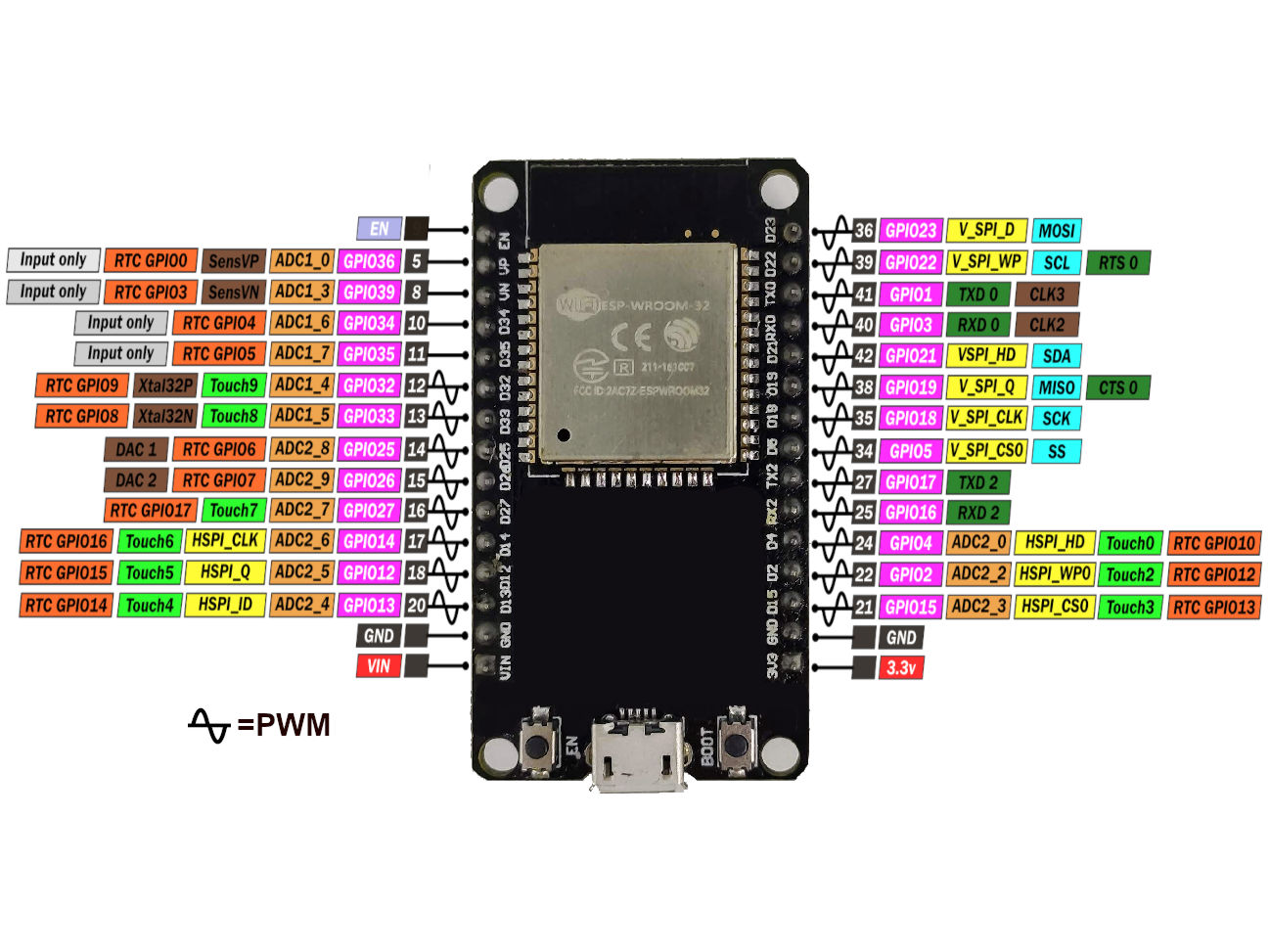ESP32-WROOM-32 30PIN Type-C - ESP32 Pood
About Esp32 Pwm
The resolution of the PWM is also configurable and ESP32 PWM can be programmed anywhere between 1 bit to 16 bit resolution. The following image shows the connection for fading an LED using ESP32 PWM Controller. Code. You can use any GPIO Pin to output the PWM Signal. So, I am using GPIO 16, which is also the UART2 RX Pin.
I need help regarding the Motor driver control with esp32 using pwm signals. I tried with esp32 but both motors are working at a time I need individual pwm control for each motors. This is my ESP32 code ESP32 Set the Motor_1 PWM and Direction pin const int m1_pwm 16 16 corresponds to GPIO16-gtESP32-gtRX2
I would like to use my ESP32 to controll a PWM PC Fan. To do that I need a 5V PWM signal. But the ESP32 only has 3,3V on its output. So I was thinking using a transistor could help me out. But I am not sure if I just can use one transistor or do I need a second transistor or an optocoupler? Because of the voltage difference and the voltage drop of 0,7V on the transistor? This would be how I
This is because the ESP32 has more than one way to generate PWM outputs. The equivalent of analogWrite used in Arduino to generate a PWM, in the case of the ESP32 would be the modulation they call ledc. Although the function is called ledc, it does not mean it is only for LEDs. It can be used for any device, including motors, transistors, etc.
The ESP32 can generate a PWM signal with a frequency of up to 40 MHz. PWM Resolution. So, what exactly is this quotmaximumquot value? The quotmaximumquot value is determined by the PWM Resolution.If the PWM resolution is quotnquot bits, the timer counts from 0 to 2 n-1 before it resets.For example, if we configure the timer with a frequency of 1 Hz and a resolution of 8 bits, the timer will take 1
Yes, there are a few ways to drive a 5V PWM fan with an ESP32. One way is to use a MOSFET transistor. A MOSFET transistor is a type of transistor that can be used to switch high voltages and currents. To use a MOSFET transistor to drive a 5V PWM fan with an ESP32, you would need to connect the following The ESP32 GPIO pin to the gate of the
This is best dealt with a N channel enhancement mode mosfet. The current draw from the GPIO pin on the ESP32 will be much lower and the onoff of the transistor will be betterfaster. 380mA is not that much in the world of most mosfets. A quick digikey search finds a 3.2A part in a SOT-23 package for 0.43each. NTR4170NT1G.
Related Tutorials Based On ESP32 PWM. ESP32 PWM Motor Speed Control ESP32 PWM Servo Motor Control ESP32 PWM Fan Speed Control And More Learn More About PWM in General. PWM in 8-Bit Microcontrollers Tutorial PWM in ARM-Based STM32 MCUs Software PWM Technique increase PWM pins count Get 16-Bits Resolution PWM With a 10-Bit PWM Peripheral
This linkage instructs the ESP32 to output the PWM waveform generated by the channel on the designated pin. Multiple pins can be attached to the same channel, allowing them all to produce the same PWM signal. While all GPIO pins support PWM output, the ESP32 only has 16 channels, limiting the number of simultaneous PWM waveforms to 16.
2SD965 NPN Transistor. Adafruit RFM69HCW Transceiver Radio Breakout - 433 MHz - RadioFruit. Battery Holder for 2 x 18650 3.7V battery. Data Logging Shield for Arduino. Code ESP32 PWM Example using the LEDC API - Code Parts Required. To follow this tutorial you need these parts ESP32 DOIT DEVKIT V1 Board - read best ESP32 development



































